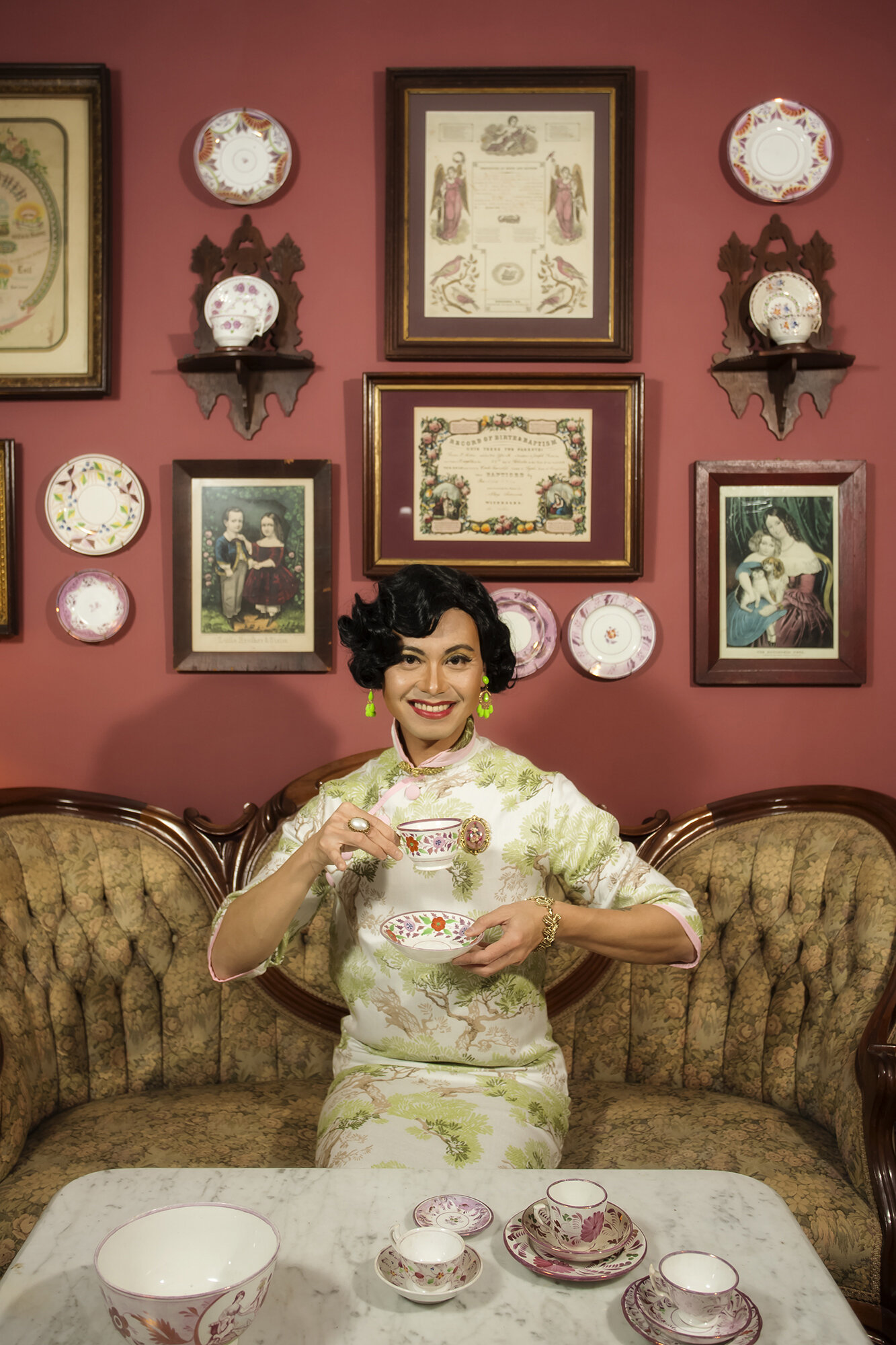Mrs. Spring Fragrance
© Sanh Brian Tran
Mrs. Spring Fragrance, one of a series of stories written in 1912 by Edith Maude Eaton (under the nom de plume Sui Sin Far), begins by introducing a woman named Mrs. Spring Fragrance. The woman, a Chinese immigrant in the United States, is introduced through her own Americanization. Though she spoke no English when she arrived in Seattle, five years later her husband declares she has not a single English word left to learn. Eaton writes, “Though [Mr. Spring Fragrance was] conservatively Chinese in many respects, he was at the same time what is called by the Westerners, ‘Americanized.’ Mrs. Spring Fragrance was even more ‘Americanized.’” Eaton’s series follows the couple’s experience in America, peppered with racialized aggression toward them and framed by their commitment to both their Chinese heritage and desire to be American. It is this character -- the eponymous Mrs. Spring Fragrance -- that Sanh Brian Tran personifies in his 2017 photo series (also titled “Mrs. Spring Fragrance”).
© Sanh Brian Tran
Tran, the child of Vietamese immigrants, spent the majority of his life living in West coast cities -- first Los Angeles and then San Francisco. Following a move from San Francisco to a rural town in Pennsylvania, Tran turned his camera on himself. Tran, who identifies as a queer man, began to explore what it means to be non-White and gay in his new locale. In his artist’s statement he writes, “While queer gender performances and identities are becoming increasingly visible in urban settings, they remain the subaltern in a rural setting.” His work becomes revolutionary in this sense -- altering and broadening the visual language of his new home and community. He centers on a specific symbol of rural America -- camouflage -- in this exploration. In his artist’s statement, Tran explains a guiding question of his work: “How do I fit in my rural landscape amongst the white faces, red barns, and camouflage?”
“Mrs. Spring Fragrance” features Tran, dressed in the facade of a mid twentieth century housewife. We interact with the character in the kitchen of Tran’s own home. The composition and setting is sourced from a scene in Eaton’s short story, in which Mrs. Spring Fragrance ventures to make American “fudge.” Tran wears a blue qipao-style dress with red flowers, on top of which lies a doily-like red apron. Three strings of pearls form a collar around the curving neck of Tran’s dress. Tran wears a wig of neatly coiffed black hair. The photographs document Tran’s preparation of the fudge. The first shows Tran filling a copper cot with water. Instead of looking at the task at hand, Tran serves the camera a face of coy surprise. Precisely painted lips open in a neat ‘O’ and Tran’s neatly drawn eyebrows curve in mock shock. Throughout the images, Tran’s posture and expression are reminiscent of the dramaticized fashion photography of mid-century American magazines.
© Sanh Brian Tran
© Sanh Brian Tran
In addition to confronting constructed expectations of masculinity and femininity, Tran’s photographs are a powerful examination of issues of race, class and immigration that underscore visual manifestations of “American.” Tran resuscitates a series of short stories documenting the acute struggle of Chinese-Americans at the turn of the century. However, rather than a story of insulated assimilation and a hushed melding of cultures, Tran’s photographs are defiant in their refusal to submit to narrow claims of gender and nationality.
You can view more of Sanh Brian Tran’s work here
@ Sanh Brian Tran












